|
BULB LOG 19 10th May 2005
In between the heavy showers of rain, hail and sleet being brought over at speed by a strong north wind, the sun does shine. It shines long enough in a clear blue sky for us to think it is alright to go out and enjoy the garden, then, once it has tempted us out, a big black cloud comes over and dumps.
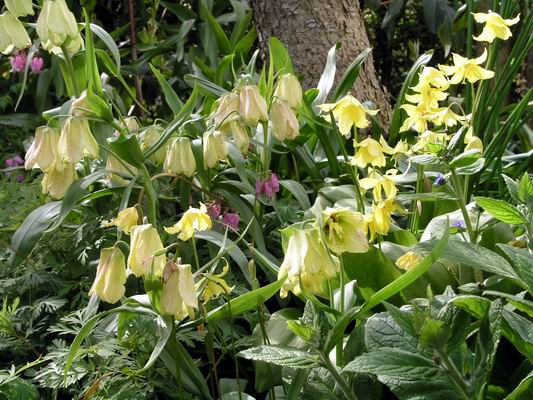
Fritillaria pallidiflora
Fritillaria pallidiflora is among the last of the frits to flower and I think it looks best growing in the garden. Here it is, growing with erythroniums, through the delicate ferny foliage of dicentra in the same all-season, multi-storey bed that I showed full of corydalis in log 12, which has all died back now.
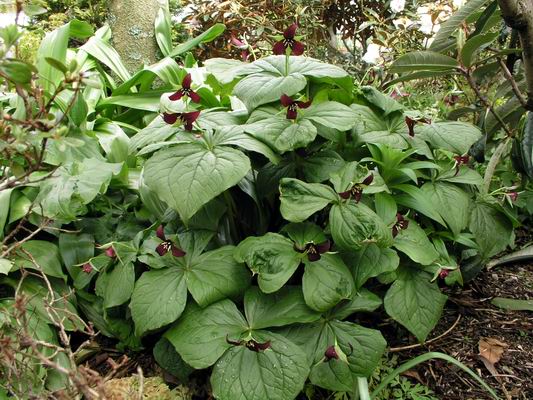
Trillium erectum
It is Trillium time with many of the larger species now in full flower. Trillium erectum makes very fine clumps provided we plant it in a situation where it gets as much protection from the wind as possible. In the cool north they do not need planted in shade but must be protected from the wind which will tear their delicate leaves to tatters. The wrinkled, deformed leaves that you will see in this clump are the result of frost damage to the buds which sit exposed just on the surface for most of the winter.
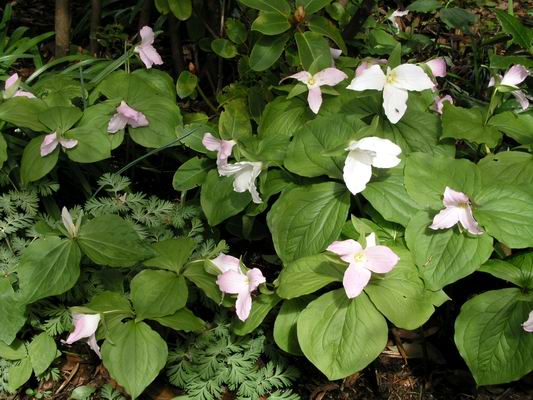
Trillium grandiflorum flush.
Our seed raised selection of pink flushed Trillium grandiflorum is establishing well in various positions in the garden. Again we plant them close to and under rhododendrons and shrubs, not for shade but to shelter them from the wind, plus they do not mind the competition from the shrub. See more pictures of these and many more trilliums on the Forum pages of this site.

Crocus corm
I should have shown a picture of a Crocus corm on last week's log but I was already getting carried away and had reached 16 pictures. As I mentioned, crocus corms are replaced annually and you can see the remains of the old corm with the roots coming from it with a nice new corm and two smaller corms growing from the top of it. The old corm will continue to pass on what remains of its food store over the next month as the plant goes into its summer rest. It is nice when bulbs increase by the bulb in this way but my favourite method of increasing them is by seed.
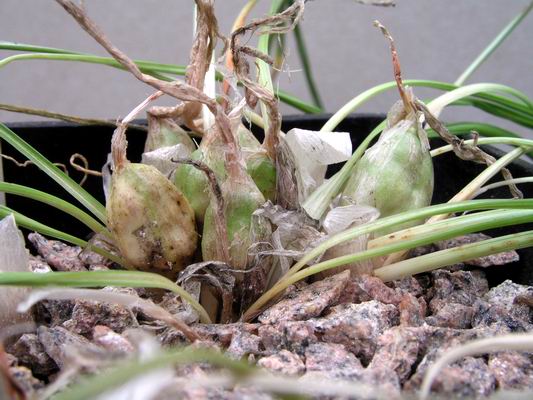
Crocus seed pods
What a joyous sight. A huddle of crocus seed pods pushing through the gravel as the petiole finally extends, pushing them above the ground for dispersal. It is only the tube of the crocus flower that rises above the ground at flowering time. The showy petals attract insects which transfers the pollen from the anthers to the stigma which, if conditions are favourable, will grow down to the ovary which remains underground until the seed is ripe. Only then does the flower stem extend to push the seed pods up - as we see above.
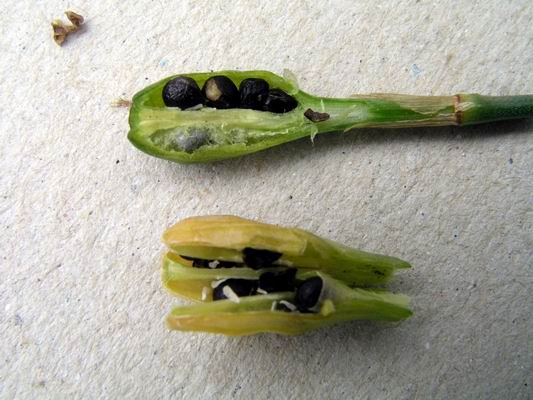
Narcissus seed pods
I am also collecting seed from the first of the narcissus. You can see in this picture I have sectioned through the pod to show the seeds which have been fertilised by the pollen tube growing down the central tube from the stigma. The pod is divided into three compartments each holding 4 or 5 seeds in this example. Also look at the second seed from the left in the top pod and you will see that I have nicked it with the blade exposing the white embryo inside the shiny black seed coating.
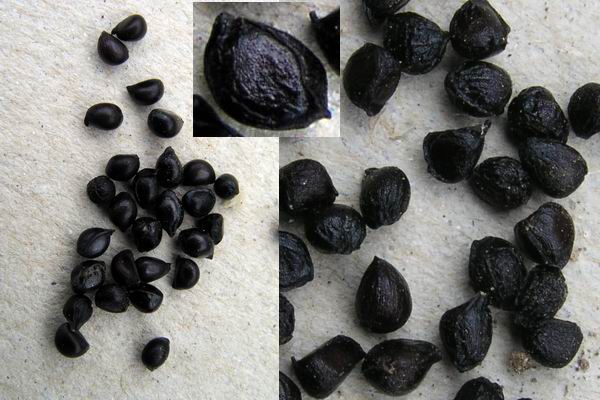
Narcissus seed
I always enjoy looking at the seeds with a magnifying glass, however since I have started using digital photography the magnification that I can get on the screen of my PC shows more detail than I ever saw before. Who says digital photography is not as good as 35mm film? They must have their head in the sand!
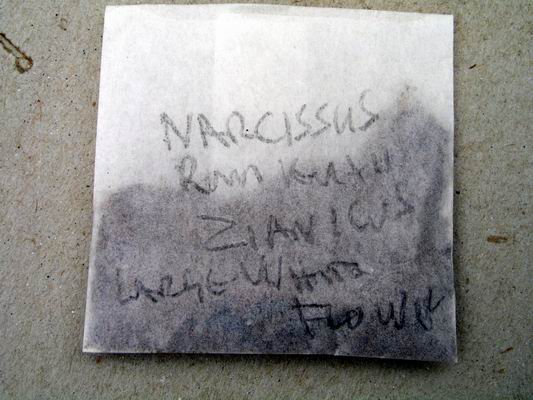
Narcissus seed packet
When I collect my Narcissus seed I store it in packets, paper or polythene, but always cover it with a good quantity of fine dry sand. I find that the seed stores better this way as it does not dry out the same as it would if stored without being covered by the sand.
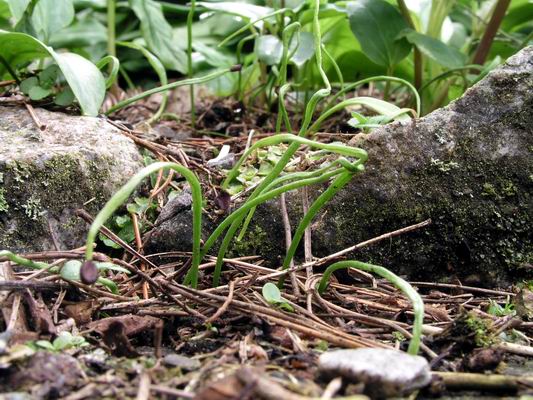
Erythronium seedlings
Of course not all of our seed gets collected; we like to leave some to naturalise in the garden. I always remember when I was new to this gardening lark how impressed I was seeing plants self seeding in established gardens and I wondered why that did not happen in ours. The answer was, as so often, blindingly obvious - we collected all our seed. So now by accident or design we always let some seed shed naturally.
Some of the Erythronium seedlings above are growing in a thin layer of humus, thrown from the bed by blackbirds, on top of a concrete paving slab. I am fascinated and wonder how they will cope in that situation if they survive at all.
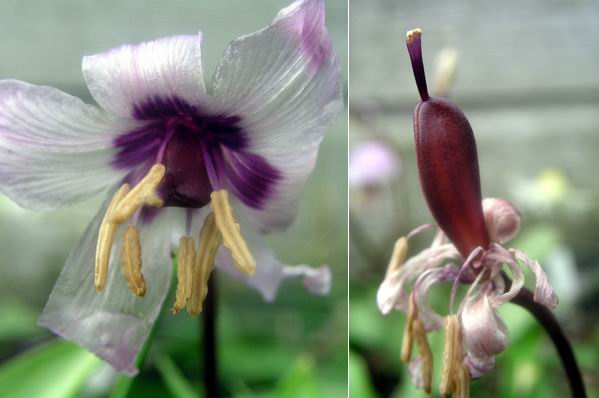
Erythronium hendersonii
As the flowers of Erythronium hendersonii start to fade the fertile seed pods are swelling nicely. Every one is precious especially as they suffered badly in the gales that we experienced last month when many of the flowering stems were simply snapped off.
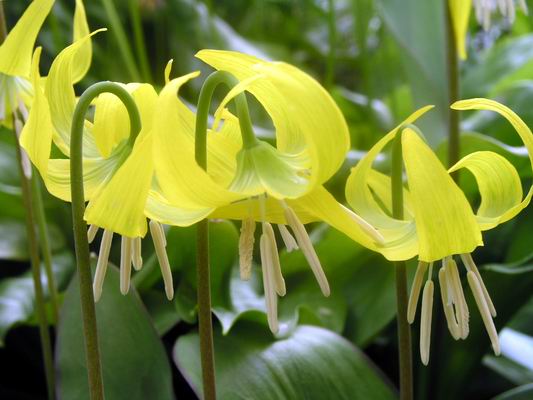
Erythronium grandiflorum
I seemed to have slipped back into showing Erythroniums again, (tee hee). A later flowering form of Erythronium grandiflorum whose seedlings are remarkable uniform showing very little variation. Other forms we have give a wide variation within the parameters of the species. One characteristic of this form is a purple red line around the edges of the plain green shiny leaves.
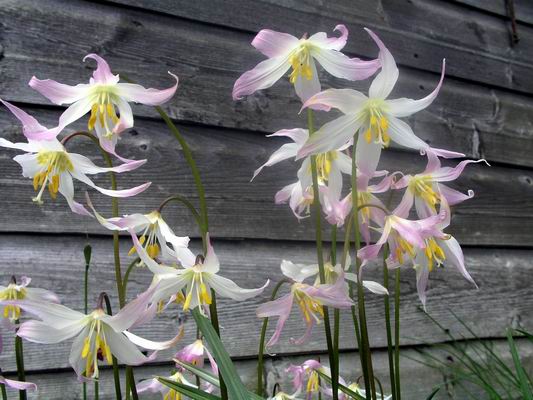
Erythronium elegans
The pure white crystalline flowers of Erythronium elegans start to go pink from the tip as they are fading, some end up a deep purple. These are among the last of the Erythroniums to flower the very last is E. montanum which is not yet fully out - something to look forward to.
^ back to the top ^
|

